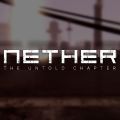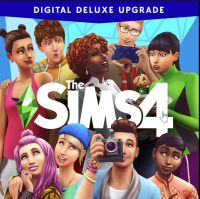Todd Howard admits Fallout 4’s cinematic dialogue missed the mark
- 12 Nov 2025

Todd Howard has been candid about one of Fallout 4’s most debated choices: its cinematic, voiced-protagonist dialogue. Despite the studio “spending forever” building the system, he says it “really did not resonate.” Bethesda aimed to boost immersion with tighter camera work, a four-direction dialogue wheel, and paraphrased responses to keep exchanges brisk and filmic. The idea was elegant on paper: less reading, more performance, cleaner pacing. In practice, players often felt their agency blur, as the presentation-forward approach trimmed the expressive sprawl that defined earlier Bethesda RPGs. That gap between intention and reception is the crux of Howard’s reflection—ambition wasn’t the issue, alignment with role-play expectations was.
Why it fell short for many players
The heart of the criticism was clarity and authorship. Paraphrased choices sometimes obscured the exact line your character would deliver, producing moments where a seemingly mild prompt turned into a forceful response or a joke that undercut the scene. With a fixed voice and tone for the protagonist, role-play boundaries narrowed further; some players felt less like they were inhabiting a persona and more like they were steering a predefined lead. The cinematic camera cuts, charming on first pass, could also break flow during routine chatter or backtracking, making repeated conversations feel performative rather than reactive. Layered together, those factors reduced the sense that stats, skills, and reputation were opening new conversational doors, and increased the impression that the wheel funneled you toward broadly similar outcomes.
How Bethesda course-corrected
Bethesda’s follow-ups reveal clear lessons. Fallout 76 moved away from the voiced protagonist and returned to text-forward options with visible checks for skills, reputation, and quest flags. Starfield doubled down on that philosophy, shipping a silent lead, explicit dialogue lists, a persuasion minigame with readable stakes, and light staging that supports rather than dominates the exchange. The design priority shifted from presentation to intent: choices should say exactly what you are about to say, and systemic hooks—traits, factions, skills—should determine who listens, who resists, and which branches genuinely diverge. Performance capture and camera framing remain tools, but they now serve legibility and reactivity rather than headline the experience.
What this signals for future RPGs
Howard’s remarks suggest the studio will keep leaning into clarity, breadth of role-play, and systemic consequence in The Elder Scrolls VI and any future Fallout. Expect dialogue that reads precisely, more visible gates tied to character building, and questlines that branch with sharper differences in tone and outcome. That doesn’t mean abandoning craft; it means using cinematics to enhance mood once player intent is locked. The broader lesson is that immersion comes as much from being understood by the game—your build, your reputation, your ethics—as from how cinematic a conversation looks. When those vectors align, players feel ownership of the story rather than passengers on a polished tour.
Advice if you’re replaying Fallout 4 today
If the dialogue wheel still rubs you the wrong way, the community has refined solutions. Full dialogue text mods replace paraphrases with exact lines, restoring confidence in your choices. Camera and conversation timing tweaks can reduce jarring cuts, while mods that add skill checks and reputation nuance help the game echo older Fallout sensibilities without dismantling Fallout 4’s core. The official next-gen update smooths performance and visuals, but it doesn’t overhaul conversation design, so modding remains the best path to a more transparent, role-play-friendly run. With those adjustments, the strengths of Fallout 4—its crafting, exploration density, and environmental storytelling—shine without the friction that once defined its talky moments.
Latest Articles
-
Navigating the Legendary Arena: Strategies, Rewards, and Cultural Immersion in Honor of Kings
Honor of Kings offers a vibrant universe that continues to captivate players through a dynamic blend of engaging in-game narratives and innovative reward opportunities. This interactive experience interweaves tactical battles with culturally rich themes, inviting enthusiasts to explore a realm defined by strategic play and community-led events. Unique codes serve as gateways to exclusive skins, event items, and character enhancements, enhancing the gameplay while also spotlighting a commitment to evolving challenges and festivities. The game’s structure is infused with elements drawn from Asian-inspired fairytales harmonized with competitive multiplayer action, ensuring that both casual gamers and veteran strategists always have something...

- Mary Foster
- 19 Nov 2025
-
Epic Horizons: Crafting India's Grand Mythological Adventure
In an impressive display of cinematic ambition, the celebrated filmmaker returns with a project that promises to redefine Indian cinema. Building on the international success of his earlier work, he introduces his latest venture—a mythological action-adventure that is already stirring excitement. At a grand event held in Hyderabad before 50,000 spectators, a brief preview and a series of striking posters were presented, showcasing one of the prominent leads in the production.
The snippet offered hints of a narrative that flits between vastly different eras and continents, taking audiences on a journey from icy expanses to sunlit terrains, even including a mystic...

- Lillian Young
- 19 Nov 2025
-
Covert Tactics and Delayed Releases: The $191M Earnout Controversy Unraveled
An emerging controversy has surfaced involving a major gaming publisher and the creative team behind a highly anticipated sequel. The conflict centers on financial disputes and the methods allegedly used to delay a game's release.
The developers and founders of the sequel contend that the publisher set up a covert unit to obstruct payments. They claim this group, referred to by insiders as a special project, was engineered to postpone the release and thus prevent the triggering of a significant earnout.
Matters escalated following the deferral of the game's early access launch in July. This action intensified tensions between the development team...

- Hannah Paul
- 19 Nov 2025












